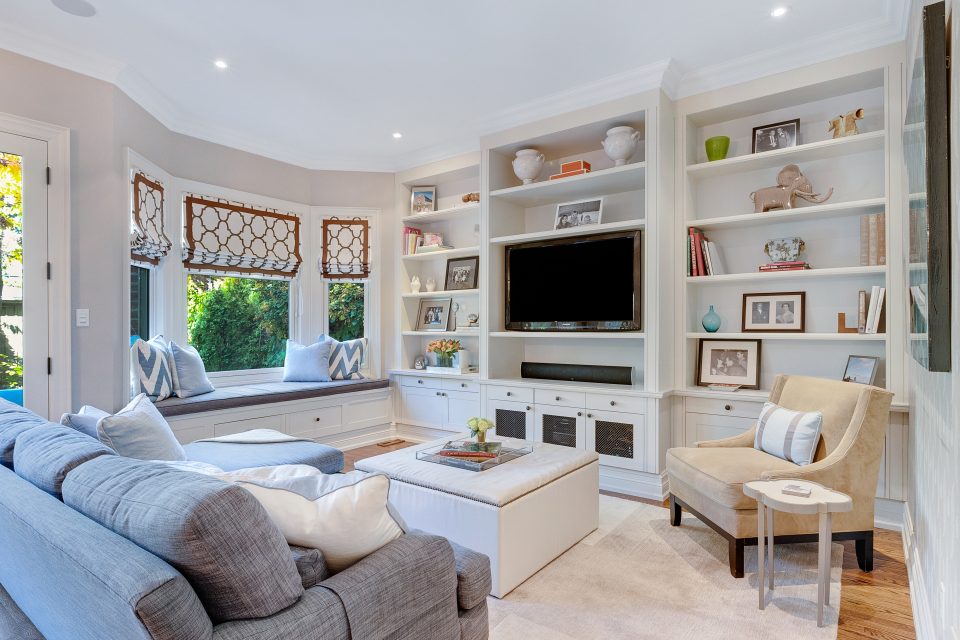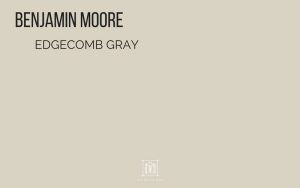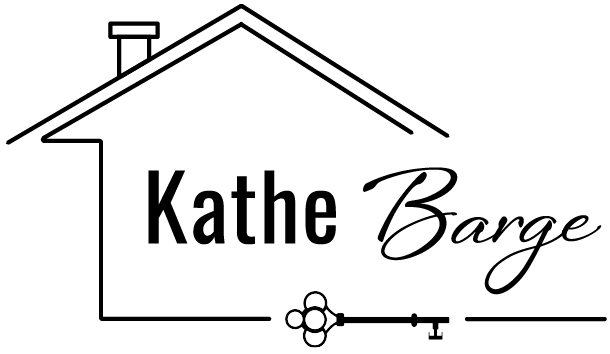
by Kathe Barge | Jul 21, 2023 | Buyers, Buying Conditions, Contracts, Downsizing, Helpful Tips, Interest Rates, Investment Properties, Market Trends, Mortgage, Real Estate
We are moving toward retiring and downsizing. Is there anything we should be thinking about as we move toward this goal?
One very important thing for you to consider is how you plan to pay for your retirement home. If you are thinking you want to finance your home with a mortgage, you are going to need an income stream that the lender can use to qualify you for the loan. Simply having a large bank account is not enough to get a mortgage – the lender will need to see that your assets are generating enough income to pay for the mortgage and associated home ownership costs. You may not have your assets invested in income producing investments and may instead be invested in appreciating assets. Lenders will not consider capital gains when qualifying you for a mortgage, although they will generally look at your social security income if you are receiving that. Many buyers are surprised by this issue, and find themselves retired with no regular income stream and unable (probably for the first time ever) to get a mortgage.
You do have options of course! You could plan your downsize move BEFORE you retire so that you still have your employment income stream that can be used to qualify for a mortgage. It is very important that you have not announced your retirement before purchasing the retirement home, however. The lender will verify your continued employment right up to your closing date, and if they here from your employer that you are retiring, you may lose your loan.
You could also plan to pay cash for your retirement home. If you plan to go this route, you will want to make sure you have saved sufficient funds. If you are planning to use your equity in your current home to buy your retirement home, you will need to consider how to bridge the gap between selling your existing home and buying the next one – there are many options available to you. If you are planning a retirement and a move, please reach out to me in advance – I can help you strategize for a successful transition on all fronts.

by Kathe Barge | Jun 13, 2023 | Buyers, Buying Conditions, Design, Downsizing, Helpful Tips, Home Improvements, Property Value, Sellers, Selling Conditions
Both our bathrooms have claw-foot tubs which I am thinking of replacing with walk-in showers. What is the value of having a tub in the bathroom in place of a shower or in addition to a shower?
Every home must have at least one bathtub. A prospective buyer might have kids or just like a good soak and many will reject a home if there isn’t a tub available. More often than not, if there is only one tub in a home it is in a kid’s bathroom, and this is most commonly configured as a tub/shower combination. There could be a tub in the master bathroom as well, but only if there is abundant space. If you have to choose between a large, luxurious (spacious) shower in the master or a tub/shower, ditch the tub and go for a pure shower. If there are multiple kids bathrooms, then only one needs to have a tub. Typically, that tub is not a claw foot tub unless it has a shower ring (which is not tremendously appealing). When claw foot tubs remain, they are typically in a bathroom that has plenty of room for both a shower and a tub. Re-glazed, these antique tubs can be the focal point of a remodeled luxury bath.
As far as value goes, value is really only recouped if you remodel the entire bathroom. In other words, if you put in a new shower but leave the old floor tile and old vanity, you really have added no value. If you redo the whole bathroom, you will likely recoup more than what you pay to remodel the bathroom, as long as you shop smartly when doing your remodel and sell your home while the bathroom still feels current (under 15 years). It is also very important to make choices that are classic and stand the test of time if you don’t want your home to feel dated sooner rather than later. I suggest, given the age of your home, that you make classic choices — Carrera marble, white subway tile, and silver-tone fixtures would all be timeless choices appropriate for an historic home.
Of course, I am available to provide on-site advice if that would be helpful to you as you have many options – give me a call – I’m happy to provide my free advice!

by Kathe Barge | Aug 8, 2022 | Buyers, Buying Conditions, Design, Downsizing, Helpful Tips, Home Improvements, Home Staging, Inspections, Market Trends, Property Updates, Property Value, Real Estate, Sellers, Selling Conditions
We aren’t ready to move but want to update our home – what are the best choices for paint colors and flooring changes, assuming we may want to move in the next few years?
New paint colors must harmonize with the rest of your home, unless you plan to repaint the entire interior of your home, so any suggestions need to be taken in the context of what else is going on inside your home. My best suggestion for a currently fairly timeless paint color is Benjamin Moore’s Edgecomb Gray. This color blends with virtually every shade of white that might be on your trim and nearly every color flooring that might be in your home. It is really more of a greige than a gray and, like a chameleon, changes color a bit depending on what is in the space and what kind of light is filtering in through the windows. However, if your home is a palette if golds, for example, this color might not be the right choice! Trending now is white on white (with trim and walls painted the same or nearly the same shade of white), but this is a design style that is best incorporated throughout the entire home, and not just a singular room. If you have wallpaper in your space, then it’s a very good investment to have it removed (do not paint over it, no matter what the painter tells you) and painted in a color that coordinates with your design aesthetic. Wallpaper overall remains a difficult sell.
This color blends with virtually every shade of white that might be on your trim and nearly every color flooring that might be in your home. It is really more of a greige than a gray and, like a chameleon, changes color a bit depending on what is in the space and what kind of light is filtering in through the windows. However, if your home is a palette if golds, for example, this color might not be the right choice! Trending now is white on white (with trim and walls painted the same or nearly the same shade of white), but this is a design style that is best incorporated throughout the entire home, and not just a singular room. If you have wallpaper in your space, then it’s a very good investment to have it removed (do not paint over it, no matter what the painter tells you) and painted in a color that coordinates with your design aesthetic. Wallpaper overall remains a difficult sell.
As to flooring, real wood floors remain the best investment you can make. They are timeless and easy to refinish if they become worn or if the buyer prefers a different color. I highly recommend choosing a medium tone brown, not too yellow, red or dark and preferably in ¾” thickness. If engineered wood floors are what your budget requires, choose one that the manufacturer indicates can be refinished at least once, and keep a few extra pieces on hand in case you damage any through normal wear and tear. Bamboo is another great option and there are on-line suppliers that offer a variety of shades in ¾” planks – it is very resilient, environmentally friendly and installed can look like hardwood. I do not recommend that you choose the latest trend, “LVL” (luxury vinyl flooring), for anything beyond the basement level of your home. These are plastic floors, and if your home will likely sell for over $500,000, these floors will not be appreciated on the main or upper levels. Finally, carpet in a neutral tone plush (no berber, no mixed colors) is acceptable as long as they are clean and stain free. If you stain them during the remaining time in your home, you would need to replace them again before you sell your home.




 This color blends with virtually every shade of white that might be on your trim and nearly every color flooring that might be in your home. It is really more of a greige than a gray and, like a chameleon, changes color a bit depending on what is in the space and what kind of light is filtering in through the windows. However, if your home is a palette if golds, for example, this color might not be the right choice! Trending now is white on white (with trim and walls painted the same or nearly the same shade of white), but this is a design style that is best incorporated throughout the entire home, and not just a singular room. If you have wallpaper in your space, then it’s a very good investment to have it removed (do not paint over it, no matter what the painter tells you) and painted in a color that coordinates with your design aesthetic. Wallpaper overall remains a difficult sell.
This color blends with virtually every shade of white that might be on your trim and nearly every color flooring that might be in your home. It is really more of a greige than a gray and, like a chameleon, changes color a bit depending on what is in the space and what kind of light is filtering in through the windows. However, if your home is a palette if golds, for example, this color might not be the right choice! Trending now is white on white (with trim and walls painted the same or nearly the same shade of white), but this is a design style that is best incorporated throughout the entire home, and not just a singular room. If you have wallpaper in your space, then it’s a very good investment to have it removed (do not paint over it, no matter what the painter tells you) and painted in a color that coordinates with your design aesthetic. Wallpaper overall remains a difficult sell.
